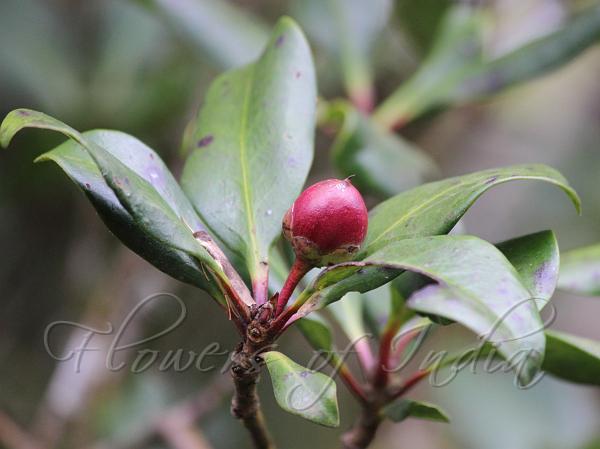|
| Cleyera |
|

|

| File size | 570164 |
| Original date | 10/7/14 11:28 AM |
| Resolution | 5184 x 3456 |
| Flash | Flash did not fire, auto |
| Focal length | 250.0mm |
| Exposure time | 1/400s |
| Aperture | 6.3 |
| Focus Distance | |
| Metering Mode | $meteringMode |
| Camera make | Canon |
| Camera model | Canon EOS 600D |
| Sensor type |
|
|
|
|
Photo: |
Botanical name: Ternstroemia gymnanthera Family: Theaceae (Tea family)
Synonyms: Ternstroemia parvifolia, Ternstroemia lushia, Cleyera gymnanthera
Synonyms: Ternstroemia parvifolia, Ternstroemia lushia, Cleyera gymnanthera
Cleyera is a shrub or small tree up to 15 m tall. Bark
is grey, irregularly scaly when mature; blaze pinkish. Young branchlets
reddish, round, hairless. Leaves are simple, alternate, spiral,
clustered at twig ends; leaf-stalk 0.5-1.5 cm long, reddish, channeled,
hairless; blade 4-10 x 1.2-3.5 cm, elliptic to elliptic-obovate, tip
pointed or blunt and sometimes with retuse tip, base decurrent or
narrowed, margin entire and curled, hairless, leathery, dark green and
shining above, pale beneath; midrib slightly channeled above; secondary
nerves and tertiary nerves obscure. Flowers are unisexual, yellow, in
leaf-axils or extra in leaf-axils, solitary; flower-stalk 3 cm long.
Male flowers similar to bisexual flowers but ovary reduced to a
pistillode. Bisexual flowers: bracteoles triangular to
triangular-ovate, 1.5-2.5 mm, margin glandular toothed, tip pointed;
sepals ovate to long ovate, 4-7 x 3-4 mm, hairless, margin glandular
toothed, tip rounded; petals pale yellow, obovate, 6-9 × 4-6 mm, tip
rounded and retuse; stamens 4-5 mm; anthers oblong, longer than
filaments. Berry is ovoid or spherical, reddish when ripe; seeds 4-6.
Cleyera is native to East Himalaya, South India and Indo-China, found
in forests, thickets, at altitudes of 200-2800 m. Flowering: May-July.
| Identification credit: S. Jeevith | Photographed in the Nilgiris, Tamil Nadu. |
• Is this flower misidentified? If yes,